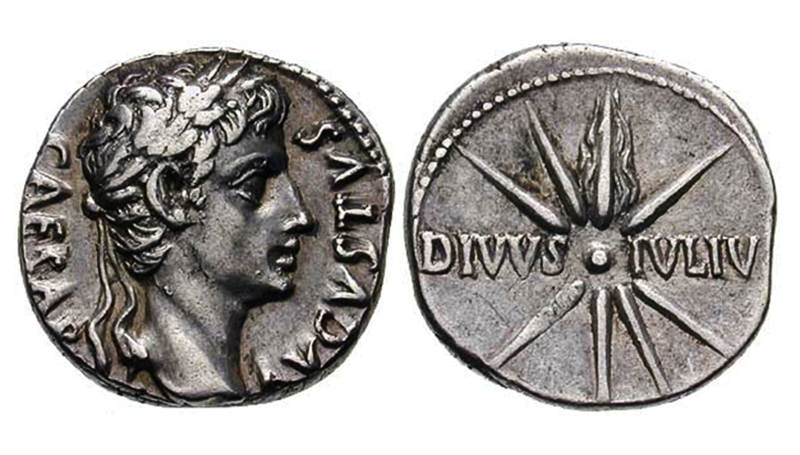
Learn the history of Roman currency, the coins from the ancient civilization of Rome. Discover the exiting hobby of collecting Roman coins collecting. Know the difference between Roman imperatorial and Republican coins.
To trace the history of Roman coins is to travel back to ancient Roman civilization. Aside from being used as money, early Roman coins were also used as medium to relay message and ideals through the designs and wording etched on the coin.
Also, many historians believe that the early currency of Rome was used as newspapers to announce won battles among other significant events. During the Roman Empire, coins bore the image of the reigning emperor and Roman deities. And apart from all these, the coins were also considered portable pieces of art.
Ancient Roman civilization and the history of Roman currency
The Roman Republic (509 BC–27 BC) was the ancient civilization in Rome following the republican form of government. In other words, the people or a part of its people had an impact on its government as opposed to monarchy wherein the head of the state or the monarch holds supreme power.
The Roman Empire (27 BC–AD 476 / 1453) was the succeeding phase of the ancient Roman civilization identified for its autocratic form of government and its control over some territories in Europe and the Mediterranean.
Although at this period Rome was ruled by an emperor (a monarch) enforcing autocracy, Caesar Augustus who was bestowed as first Roman emperor, did not want to associate himself with anything suggestive of monarchy and dictatorship.
Roman Republic coins
The Roman Republic coins began with minting silver coins & cast bronze to be used for commerce and trade with Greek colonies and in Central Italy respectively.
What images to be placed on the currency were decided by “the three men responsible for casting and striking bronze, silver and gold” or the tresviri monetales, also sometimes referred to as the mint magistrates. The trio was composed of young statesmen aspiring for political office.
Roman Republic coin designs would represent the entire Roman state usually bearing the bust of Roma, a female deity of the traditional religion in Rome, on the obverse.
As time went on, the ancient Roman coins also bore images of the moneyer’s family members who wanted to be elected for a position in the government, making the currency an advertising tool.
The reverse sides would as well bear images signifying important events such as election or voting scenes, Roman soldiers getting ready for battle, victories of Roman politicians and generals during wars, etc.
For example is the Faustus Cornelius Sulla, AR Denarius minted in the late republic. Its reverse side featured the image of Sulla, Roman politician and general, seated between Bocchus, King of Mauretania and Jugurtha, King of Numidia both kneeling. This represents one of the most remarkable events of Sulla’s life – his victory against the two kings.
The main silver coin of the Roman currency for more than 400 years called the denarius, was first introduced in 211 BC still during the republican Rome.
Roman Empire coins
The rise of the Roman Empire consequently marked coinage reforms. Local authorities & colonies were mostly allowed to strike bronze coins but not silver coins. Only Rome itself was authorized to mint coins made from precious metals like silver and gold.
The image on the old Roman coins became drastically significant when Julius Caesar (military general and political leader who played vital role in transforming the republic to an empire) issued coins that bore his own portrait. The Roman Caesar coins were the first in the Roman money that featured the image of a living individual.
Then on, the Roman Empire currency already featured the portrait of the reigning emperor (often times attempting to make the emperor appear god-like) and embodied the policies that he instituted during his rule.
Apart from the image of the reigning emperor, the coins may also feature the portrait of the predecessors, successors, and other family members. To add, the legitimacy of an heir’s succession to the throne is only acknowledged when there were coins issued bearing his image.
For these reasons, it was inevitable that the Romans attached high regard and value for the images etched on their coin money.
Roman Republican currency and Roman Imperatorial coinage
Many coins from the ancient Roman civilization are either unnamed or unknown. It is also important to note that there were types of coins used both in the Roman Republic and Empire especially during the transition years.
Here are a few named pieces in the history of Roman coins. Some of these were given names only in later time during their discovery.
| Coin | Date |
| As | 280-276 BC |
| Triens | 280-276 BC |
| Quadrans | 280-276 BC |
| Sextans | 280-276 BC |
| Uncia | 280-276 BC |
| Semuncia | 280-276 BC |
| Quartuncia | 217-215 BC |
| Antoninianus / Radiates | 215 BC |
| Decussis | 215-212 BC |
| Quincussis | 215-212 BC |
| Tressis | 215-212 BC |
| Dupondius | 215-212 BC |
| Sestertius | 211 BC |
| Denarius | 211 BC |
| Dextans | 211-208 BC |
| Quincunx | 211-208 BC |
| Semis | 211-208 BC |
| Bes | 126 BC |
| Dodrans | 126 BC |
| Aureus | 100 BC-300 AD |
| Follis / Nummus | 294 AD |
| Solidus | 300 AD |
| Siliqua | 400 AD |
Other highlights of Roman coinage history
• As is an old Roman coin money originally made from bronze and later from copper. It was introduced in the year 280 BC. As is also the base unit of Roman coinage with fractions bes (2/3 of an as), semis (1/2), quincunx (5/12), triens (1/3), quadrans (1/4), sextans (1/6), uncia (1/12), and semuncia (1/24).
• The Roman coins denarius (plural denarii), was a main imperatorial coin in the working class and the most common piece produced having existed in the Roman currency for more than four centuries.
It was a silver ancient Roman coin which at first weighed 4.5 grams then was reduced to 3.9 grams. In the middle of the 3rd century, it was replaced by the antoninianus which was believed to be worth 2 denarii.
• The aureus was an ancient Roman gold coin about the size of a denarius but heavier due to its gold content.
The aureus was never in everyday circulation but were used by administrators, bankers, or rich merchants.
Because it was prone to wear when handled frequently and gold being difficult to find and mine in those times, the aureus gold Roman coins were often melted down and recycled.
The aureus was replaced with solidus around 300 AD by the emperor Constantine.
Roman coins collecting
The coin collecting history start with the creation of Roman coinage. In fact, the first known collector of coins was the first Roman Emperor Caesar Augustus. He collected old precious coins and some of them he gave to his guests as gifts during festivities.
True, ancient Roman coins are amazing pieces of history. Today, many people still find Roman coin collecting as an enjoyable and worthwhile pastime.
It is believed that the history of Roman coins have started around fifth century BC, if not earlier. At this time, Roman economy was growing and the barter system (exchanging of farm products and other trade goods) was widely used.
– Aes rude (Rough bronze)
As commerce eventually developed, the Romans felt the need of having a more effective medium of exchange. To address this need, people used lumps of bronze called aes rude as money. The values of aes rude were according to their weight – heavier lumps constituted higher value.
– Aes signatum (Signed bronze)
Later, the ancient coins were standardized by marking designs on the cast lumps of bronze. These were called aes signatum which meant signed bronze. With weight still as the measure for value, marked “coins” had to be broken when smaller denominations were needed. These were used during 290 – 235 BC.
– Aes grave (Heavy bronze)
Aes grave or heavy bronze came to the Roman currency around 269 BC and was considered the first true Roman coins. These coins were more practical and convenient to use for they had varying shapes and recognizable designs to distinguish different denominations and values.
The aes grave became very largely used by the Romans in their trade. Eventually as time went on, the Romans learned the skills of etching more elaborate portraits and marks on their coins.
Identifying your old Roman coins
Identifying Roman coins can be easy, especially with ancient Roman coins. The following basic elements were usually found on the Roman’s coin money:
On the obverse or heads of the ancient coin
Portrait of the reigning emperor; the image of an emperor’s relative such as his son
Legend – the wording etched right below the rim (outline) of the coin above the emperor’s head; usually the legend would be the name of whose portrait appeared on the coin.
Headdress of the emperor – if a portrait does not have a headdress (or any ornaments on the head) it may signify a person of lower rank than an emperor
Bust type – the drapery or armor that is worn by the image on the coin would show his rank or status in the government or society
Motif – the motif is the image or message stamped on the coin. It usually recorded certain important events during the specific period that the coin was issued; sometimes the motifs portray religious images or commemorate won wars.
Some historians suppose that the coins were also used as “newspapers” during the reign of the Roman Empire
Legend – in the reverse side of the ancient coin, the legend or wording right below the rim of the coin would briefly describe what the motif is about
Exergue – was similar to a track mark that would tell where the coins were minted (like a mint mark in modern coins)
Factors affecting the value of Roman coins include authenticity, grade or condition, rarity, historical significance, and eye appeal. In general, coins from the ancient Roman civilization are affordable because of the large number of old Roman coins available in the market today. Collecting Roman coins is said to be the hobby of novice and low-budget collectors.
To know the prices of Roman coins from early eras, refer to online price guides or printed Roman coin catalogs. You can also avail of coin appraisal services.
Taking care of your Roman coin collection
Protect your collection of Roman coins from deterioration and damage by giving them the proper care and maintenance. Purchase coin collecting supplies such as coin holders, coin flips, albums, and folders for storage and display. You may also need cotton gloves & coin tongs in handling your coins.
Also remember to choose the right quality of coin supplies. There are cheap brands that contain chemicals which react adversely with the coins causing permanent damage.
Cleaning antique Roman coins
Cleaning coins is often discouraged by numismatists except during a few circumstances. Because most old Roman coins are full of grime and corrosion, some collectors would opt to clean Roman coins using detergent, baking soda, or vinegar and coin electrolysis for more stubborn dirt.
When you do clean your coins, always consult an expert numismatist first.





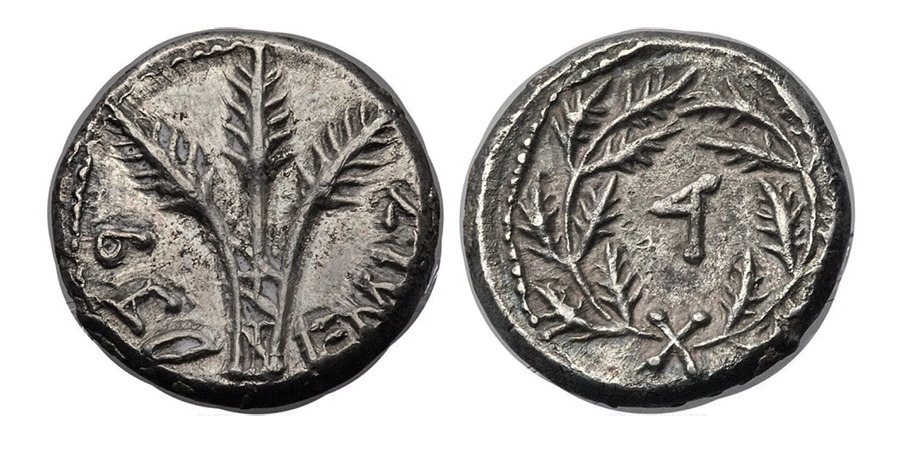
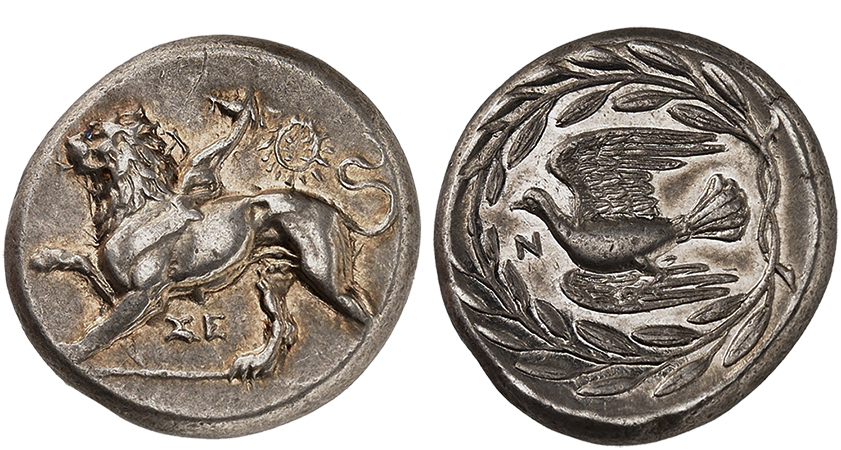
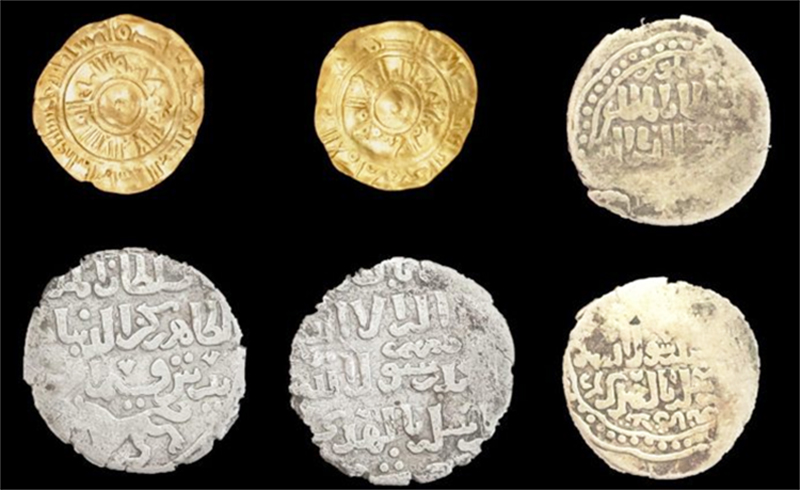
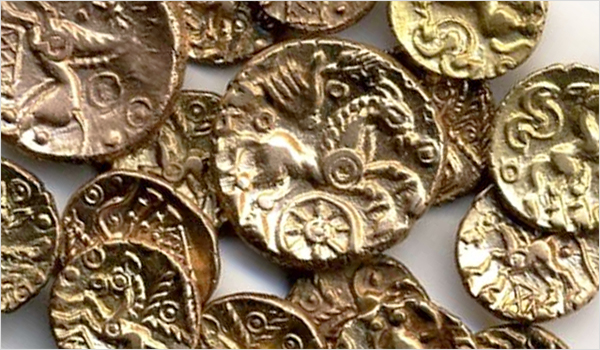

Leave a Reply